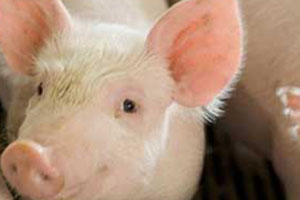England, Wales: Improved surveillance for animal diseases

AHVLA has announced an improved approach to scanning surveillance to better detect new and re-emerging animal diseases and threats in England and Wales.
A new system will be introduced to improve both the geographical and species specific coverage of disease surveillance across England and Wales by making better use of the expertise and resources of private vets, universities and the livestock industry. This follows recommendations of the independent Surveillance Advisory Group to enhance the surveillance system.
The new system will place a greater emphasis on gathering intelligence from other sources of surveillance intelligence, and places less emphasis on post mortems carried out at government laboratories. For example, large numbers of post mortems are already carried out in the poultry sector and some private vets perform post mortems on-farm. Better coordination of these alternative sources of intelligence will provide a more comprehensive threat picture to be drawn than is presently the case.
AHVLA’s director of Veterinary Surveillance Rupert Hine said: “The current surveillance system has a good history of detecting disease threats such as the first cases of Schmallenberg and bluetongue, but we know improvements can be made to give us better coverage across England and Wales. The new model will improve the effectiveness of surveillance by making better use of the expertise of private vets, universities and the livestock industry as well as retaining the existing AHVLA veterinary network.”
Commenting on AHVLA’s new model, Defra’s farming minister, George Eustice said:
“I welcome this new approach to surveillance. Detection of new diseases and improving our resilience to them is a key part of safeguarding animal health. It is a responsibility shared by the farming industry and government, and I fully support this vision of partnership working, sharing skills and expertise to manage disease risk and support our livestock farming industry.”
AHVLA surveillance will continue to be carried out from seven [1] post-mortem investigation centres spread across England and Wales at Bury St Edmunds, Carmarthen, Penrith, Shrewsbury, Starcross, Thirsk and until 2015, Winchester [2]. Surveillance at seven other existing AHVLA sites will cease, but access to post-mortem investigation services will be enhanced by the greater involvement of other suppliers of animal pathology.
A carcase collection service will be introduced for a period of three years whilst the network of non-AHVLA pathology providers is established. This will collect carcasses from within the areas where AHVLA post-mortem facilities have been closed and are not initially covered by other providers. As now, livestock keepers will be responsible for transporting carcases to the collection point, with AHVLA funding the onward journey to a post-mortem facility. This service will ensure that surveillance information from these areas is not lost in the period whilst the new system is introduced.
Statutory disease surveillance, such as testing for tuberculosis in cattle and exotic disease investigations, is unaffected by these changes.
The new model will be implemented progressively during 2014.











